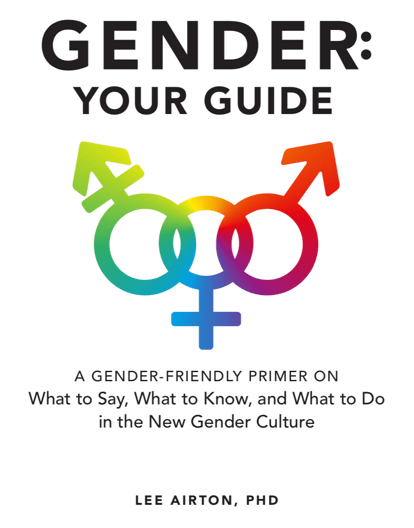The past five years have witnessed a landmark re-emergence of gender diversity in North American public life and a surge in mainstream media representation. Transgender-spectrum people – those with a gender identity that does not align with expectations based on our assigned sex – are standing on decades of trans activism and increasingly bringing our entire selves to our workplaces, schools, and other public places.
National Changes and Contemporary Challenges
Another activism achievement, human rights legislation in Canadian provinces and territories now protects all peoples’ right to participate free from gender identity or gender expression discrimination. However, many teachers and administrators are still learning about their practical duty under these recent legislative changes, and my own research has found that Ontario school boards each bring a different degree of depth and detail to the policy documents that set out staff responsibilities. And while the general public – including our students – may have more knowledge of transgender people than ever before, much of this knowledge is incomplete, erroneous, or highly politicized.
Addressing Fears
Transgender issues have lately become associated with ‘free speech.’ At its most benign, ‘free speech’ discourse papers over a person’s discomfort with something like having to say an unfamiliar or non-automatic pronoun for someone else. In my experience, affirming the discomfort itself (as all new things cause discomfort) and offering a space to learn and practice tends to help people move through the need to style their discomfort and associated feelings of vulnerability as ‘free speech’ concern. At its worst, however, ‘free speech’ discourse is used to sanitize anti-transgender intolerance, and has been harnessed in attempts to block life-giving legislation and initiatives for transgender-spectrum people.
What do I do if a student claims that they can say whatever they like about transgender people, or refuse to do their best with another student’s (or teacher’s) gender pronouns because ‘free speech’?
In what follows, I share strategies for responding to two common varieties of anti-transgender classroom speech that mobilize ‘free speech’ discourse (whether initially or in defence, if countered). These strategies are ideally a ‘first step’ in a teacher’s response. A second step, when a student persists and is engaged in producing an environment where transgender-spectrum students or those with transgender people in their families (whether known as such to the teacher or not) cannot be and remain well, is as follows:
- “You have a right to your opinion, but I have a professional and legal responsibility to maintain a classroom climate where every student can be and learn, and this includes transgender students and students with transgender loved ones.”
- “There are more appropriate forums for you to engage in this conversation. We have work to do.”
- “You can come talk about your ideas with me after class.”
“Transgender people are mentally ill!”
- “Actually, being transgender, on its own, is not a mental illness. Gender Identity Disorder is no longer recognized by the American Psychiatric Association in recent editions of its Diagnostic and Statistical Manual.”
- “If a transgender person experiences distress about their gender identity or their body, they might be diagnosed with something called Gender Dysphoria. But not all trans people experience this.”
- “Research has shown that transgender people are at greater risk of common mental health problems like depression and anxiety because of societal prejudice and being treated badly by others in everyday life, including at school.”
- “However, being transgender is not itself a mental illness.”
“Transgender isn’t real! / Transgender people are not really X or Y!”
- “Actually, scientists don’t all agree about why some people are transgender and most people are not.”
- “Each discipline – social sciences, humanities, natural sciences – has its own conversation about how gender works. There is no consensus.”
- “What we do know for sure is that ‘transgender’ people have existed for thousands of years in cultures across the world, including on this land.”
--
If you find yourself in a situation where you are confident that there is factual information that contradicts a student’s erroneous claim, it is always okay to fill in the above ‘first step’ with a promise to find and bring back this information to your class or – using your professional judgment about whether this is a safe strategy given who your learners are – initiate a spontaneous inquiry by the students. This can also be a teachable moment about evaluating online sources, which is common in almost every secondary curriculum.
Above all, remember that student safety is in many jurisdictions an overriding duty of teachers, over and above accommodating ‘free speech’ claims that are generally spurious. As teachers today (arguably, as always) cannot know for sure whether their students are in some way transgender, or may come to know themselves as such in time, this duty is always on the table.

For more information to understand and engage in today's gender conversation, check out Dr. Lee Airton's book here.
Dr. Lee Airton is an Assistant Professor of Gender and Sexuality Studies in Education at Queen's University in Kingston, Ontario. Their public scholarship includes the blog They Is My Pronoun, the No Big Deal social media initiative, and the book Gender – Your Guide: A Gender-Friendly Primer on What to Know, What to Say and What to Do in the New Gender Culture (Adams Media - An Imprint of Simon & Schuster). Dr. Airton’s scholarly articles appear in the journals Gender and Education, Sex Education, Curriculum Inquiry, Teachers College Record, and the Journal of Education Policy. Their current SSHRC-funded research project explores how Ontario K-12 schools are responding to the inclusion of gender identity and gender expression protections in human rights legislation.
Learn more at www.leeairton.com.

